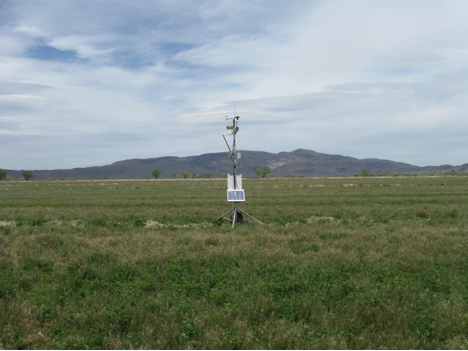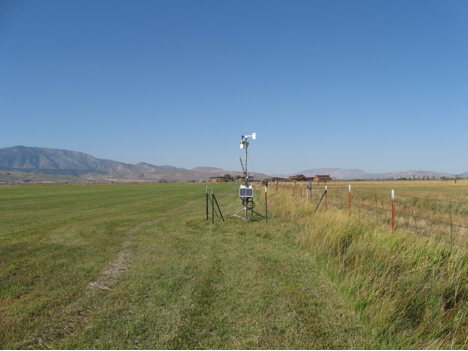About NICE Net
With collaboration between Desert Research Institute's (DRI) Division of Hydrologic Science, WRCC (Western Regional Climate Center),
Nevada State Engineer's Office, U.S. Bureau of Reclamation, and Nevada Division of Water Resources, DRI has developed the Nevada Integrated Climate and
Evapotranspiration Network, NICE Net, which is a weather station network measuring weather variables to assess climate and reference
evapotranspiration across the state of Nevada. The focus of the NICE Net is to measure and provide climate data that are derived from
agricultural areas of Nevada for estimating irrigation water requirements. Currently, NICE Net consists of 18 agricultural weather
station located throughout the state of Nevada (
see map).
Agricultural Weather
With the exception of NICE Net stations, almost all weather stations in Nevada are located in dry, non-irrigated environments. The lack
of water around the weather stations causes the air temperatures to be elevated and the humidity levels to be reduced when compared to the
climate surrounding irrigated lands. This dry land aridity causes the computed reference evapotranspiration and estimated crop water
demand to be in error by as much as 30% when compared to estimates derived from well irrigated climate data. Several federal, state, and
local agencies across the western U.S. have recognized this fact and have developed their own irrigated agricultural weather networks,
such as the
AgriMet,
AZMET,
CoAgMet,
AgWeatherNet,
and
CIMIS networks.
The NICE Net is the first weather station network focused on measuring and reporting climate derived in irrigated environments in Nevada.
Currently, NICE Net consists of 18 agricultural weather station located throughout the state of Nevada (
see map).
The station Moapa is operated by U.S. Department of Agriculture and Southern Nevada Water Authority.
The NICE Net collects and stores data with sensors from various manufactures (
see sensors) and Campbell Scientific CR-1000 data
loggers. Each station transmits once an hour. Types of data
collected at each station include solar radiation, air temperature, relative humidity, windspeed, precipitation, barometric pressure,
soil temperature, and soil moisture.



